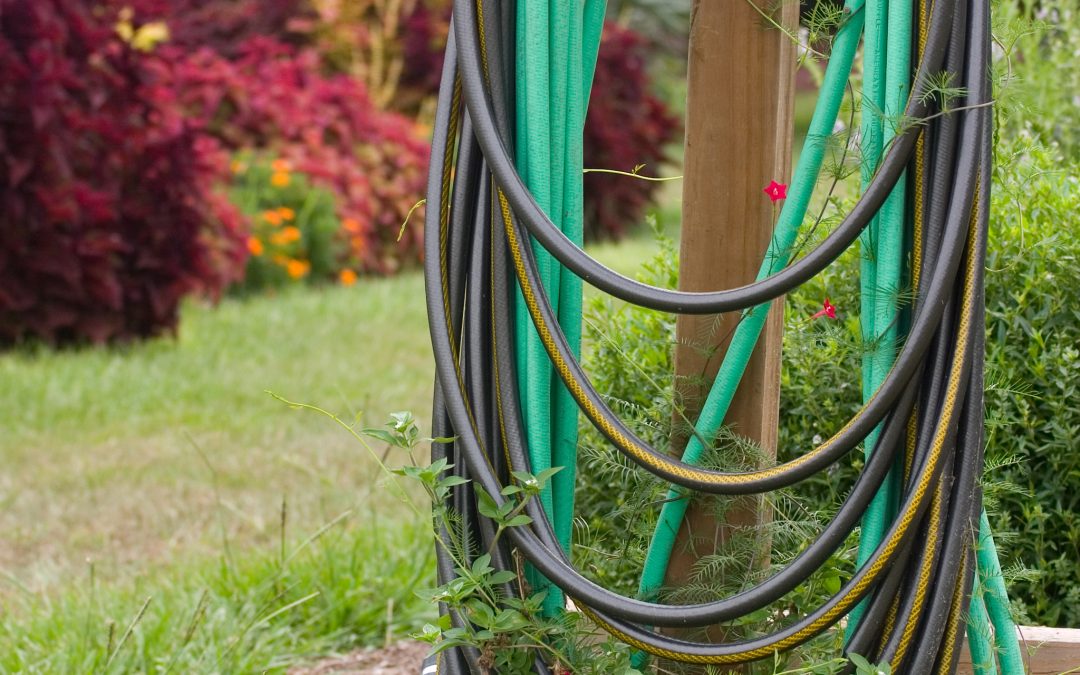
by Mark Tancig | Nov 13, 2025
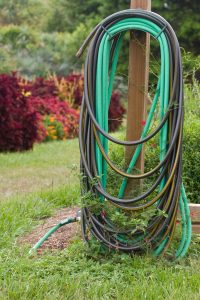
A common site in the garden – multiple hoses pieced together. Be aware of galvanic corrosion! Credit: Tyler Jones, UF/IFAS.
It was the best of times, it was the worst of times. It was a nice day in the garden, but when you go to disconnect the hose, it is somehow stuck to the spigot, connector, or other hose. You go and get the pliers, but the hose just doesn’t budge. If this has happened to you, then you now know of the chemical reaction that can occur between aluminum and brass hose fittings. Hopefully, this is just two hoses stuck together, and you can cut them off and replace them with new ends. If the hose is connected to the spigot and won’t budge, you may want to contact a plumber before you create a bigger problem.
While knowing the name of this chemical reaction, galvanic corrosion, doesn’t help you while you curse these hose fittings, it is yet another scientific discovery in the garden. Galvanic corrosion occurs when two dissimilar metals are in electrical contact with each other in the presence of an electrolyte. The metals must be dissimilar in their electrochemical voltage. I know, you just want to disconnect hoses, not learn physics, but this stuff is interesting! Basically, aluminum is pretty reactive, especially when joined up with brass, bronze, copper, and even stainless steel. In the case of our hoses, the water acts as an electrolyte thanks to the calcium present in our delicious and abundant limestone aquifer groundwater. You put all these together and, bazinga, you have the aluminum hose end corroded into your brass hose end so strongly that no pliers will ever unlock them.
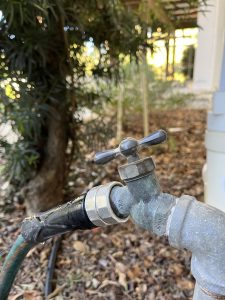
This won’t work out well for too long! Aluminum hose end on a brass spigot will lead to galvanic corrosion. Credit: Mark Tancig, UF/IFAS.
So, what do you do to prevent this? The easiest way to prevent galvanic corrosion from ruining your nice day in the garden is to only purchase products with the same material as your spigots. Brass spigots, hose bibs, and hose ends have been the industry standard, while aluminum hose endings seem to be more of a recent occurrence. Aluminum is cheaper, so you can understand why the hose companies would be interested in switching. If you already have two different materials, first check and see if you can get them disconnected. If not, start purchasing new hoses that match the spigot and/or connector. If you can get them disconnected, one method to prevent galvanic corrosion is to just disconnect them regularly to avoid them fusing. Not sure if you’ll remember? You can also use a plastic connector between the hoses to make sure the two metals don’t touch each other or switch out the aluminum hose ends with replacement brass or plastic ends, found at most hardware stores.

A quick fix is to place a plastic connector between the dissimilar metals. Credit: Mark Tancig, UF/IFAS.
Now that you’ve learned about galvanic corrosion, it’s time to get back to gardening. Good luck with those hoses! If you have other gardening questions, please contact your local extension office.
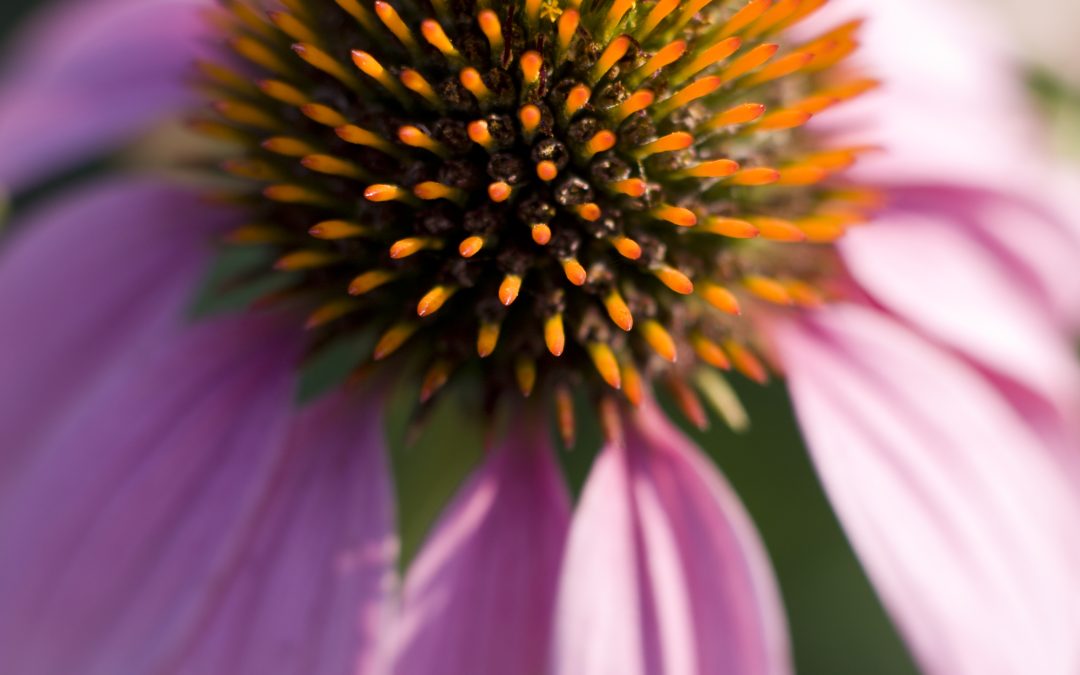
by Mark Tancig | Aug 28, 2025
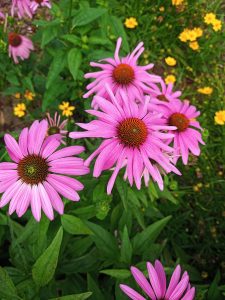
A healthy coneflower in Leon County’s Demonstration Garden. Credit: Jessica Thrasher
My last Gardening in the Panhandle article was about the many diagnostic services provided by UF/IFAS Extension. In this article, I get to share the results of those services concerning samples recently submitted to the North Florida Education and Research Center (NFREC) Plant Disease Diagnostic Clinic (PDC).
Anthracnose in Dogwood (Cornus florida)
Before you get too concerned, this is not the dogwood anthracnose (Discula destructiva) that many of us have heard about from friends and colleagues up north, but one of the more common anthracnose species (Colletotrichum gleosporoides) that infects a variety of fruits, vegetables, and ornamentals.
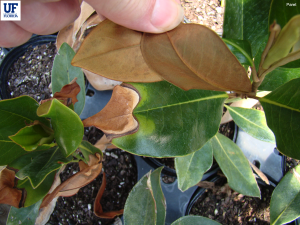
Typical leaf symptom of common anthracnose disease on a magnolia. Credit: UF/IFAS.
This sample came from a homeowner who brought us a branch from a sick looking dogwood. As many of you know, due to a host of issues, from a short lifespan to living in the southern end of its range in a warming climate, dogwoods have been faring pretty bad lately, with most landscape plantings showing signs of decline or death. While Florida extension agents are informed that it is not the terrible anthracnose from up north, some couldn’t help but think the worst. I was delighted to get a good sample for identifying the disease – one that showed both healthy tissue and diseased tissue – and finally confirm what is causing the common decline symptoms seen in Leon County dogwoods. We bagged up the sample and delivered the next day to the NFREC PDC.
Within a week, the results came back and confirmed the run-of-the-mill anthracnose. This Anthracnose, caused by the fungus Colletotrichum gleosporoides, causes lesions (spots) and/or blights (larger areas of the leaf browning) beginning at the leaf margins that tend to expand and end up causing premature leaf drop. Unfortunately, once we see the damage, typically in the summer, it is too late for any remedy, as the infection begins in the spring. In addition to good practices to encourage good airflow – proper spacing, pruning – and minimize moisture on leaves – irrigate the soil, not the leaves, water in the morning – you will also need to be able to handle some amount of damage. Removing fallen leaves and branches is also helpful to reduce the chance of it cycling back the following spring. Chemical control options include 2-3 applications of preventative fungicide sprays containing chlorothalonil, myclobutanil, mancozeb, or thiophanate methyl early in the spring according to label directions.
Aster Yellows in Purple Coneflower (Echinacea purpurea)
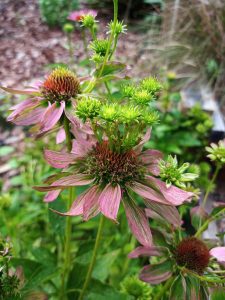
The deformed blooms of a coneflower with Aster Yellows. Credit: Jessica Thrasher
I’ve had a few questions about Aster Yellows (Candidatus phytoplasma asteris) over the years but have never positively identified the disease in plant material. So, I was somewhat excited to see some of the purple coneflowers in our demonstration garden showing peculiar symptoms. Actually, I was alerted to the strange looking plants by a Master Gardener Volunteer who had been weeding the area. We delivered a sample to the NFREC PDC and in just over a week had results.
Aster Yellows is a disease caused by a phytoplasma and the sample can only be diagnosed with molecular techniques and genetic sequencing. Phytoplasmas, by the way, are a type of bacteria that lack a cell wall and are transmitted plant to plant via insect vectors, typically leafhoppers. Once inside the plant, these phytoplasma can move with plant sap and begin to disrupt the vascular system, causing malformed and discolored flowers, plant deformations, and stunted growth. While members of the Aster family – daisy, sunflower, goldenrod – are common hosts of the disease, Aster Yellows has been found to infect over 300 species in at least 38 plant families. Other species of phytoplasma, also causes lethal yellowing and lethal bronzing of palms and several witch’s-broom diseases.
Since there are not any chemical treatments for Aster Yellows, prevention is key. Once observed, it’s best to remove the infected plants as soon as possible to prevent spreading to other nearby species. In agricultural settings, the leafhopper spreading the bacteria becomes the main target to control using various insecticides. However, in ornamental settings, simply removing the infected plants is the recommended practice.
Stay Observant
Many common diseases are present in every landscape. By ensuring soil and plant health, many of these diseases can be tolerated with little damage. It is important for gardeners and landscapers to be on the lookout for problems so they can be dealt with before they get out of hand. UF/IFAS Extension provides assistance through our county offices and diagnostic clinics to help confirm identification of the pest and provide science-backed control options. If you think you have an issue in your landscape, please reach out to your local county extension office.
Article co-authored by Fanny Iriarte, Diagnostician with NFREC PDC.

by Mark Tancig | May 28, 2025
Extension Agents get used to hearing that the local Extension Office is the community’s best kept secret. As much as we try to let folks know we’re here, many are still unaware of the services we provide. Even amongst the residents that are familiar with us, some of the services available remain unknown, especially our identification and diagnostic services. Here’s a rundown on some of the services available through your UF/IFAS Extension service.
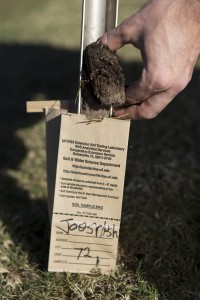
Taking a soil sample. UF/IFAS Photo by Tyler Jones
Soil Testing
This is probably our most well-known service, but it’s worth a reminder. For only $3 (pH only) or $10 (pH plus plant macro- and micro-nutrient values) per sample, plus shipping, you can have your soil analyzed in a state-of-the-art facility. To be clear, soil testing only provides a reading of your soil’s chemistry, specifically pH (acidity/alkalinity) and plant nutrient values. It does not provide information on any diseases or potential toxins that may be present in the soil. In addition to the results, you can specify the general type of plant you’re trying to grow (various grass species, vegetables, citrus, general trees and shrubs, etc.) and the report will provide recommendations to adjust the nutrient levels to be sure that plant is able to thrive. Your local agent receives a copy to help answer any questions you may have about the results or recommendations. More about soil and nutrient testing can be found at the Extension Analytical Services Laboratory website.

Experts at the Plant Disease Diagnostic Clinic can identify diseases present. Credit: UF/IFAS.
Plant Disease Diagnosis
UF/IFAS Extension has a great plant pathology lab on campus, but we also have a great resource close by in Gadsden County at the North Florida Research and Education Center’s (NFREC) Plant Disease Diagnostic Clinic. For a modest fee of $30, you can submit a sample of a diseased plant, and the lab manager will use the available methods to confirm the presence of disease and identify the disease-causing organism. Just like with the soil test results, you are provided with a recommendation on how to best treat the disease. The NFREC Plant Disease Diagnostic Clinic website has submittal forms, contact information, and directions for collecting a quality sample.
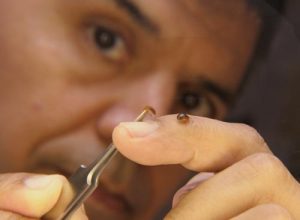
Need help with insect id? The DDIS system can help. Credit: UF/IFAS.
Plant and Insect Identification
While your local extension agent enjoys receiving plant and insect identification, there is an online submittal option available to use as well through our Distance Diagnostic Identification System (DDIS). You can set up an account and then upload photos of plants, insects, mushrooms, even diseased plants, and an expert on UF’s campus will do their best to identify it for you. The DDIS website has more information to help you set up a user account.
The Florida Cooperative Extension Service has many ways to help Florida citizens diagnose their landscape issues using science-based methods conducted by experts in state-of-the-art facilities. The above services are just a selection of the diagnostic capabilities available. To see a complete list, visit the IFAS Diagnostic Services website. You can always contact your local extension office, too, for assistance in identifying plants and insects, as well as diagnosing diseases.

by Mark Tancig | Feb 27, 2025
It’s almost March and it’s not just March Madness that’s about to happen, but No Mow March. This year will be the third year that the Horticulture Extension Agents of the UF/IFAS Northwest District have promoted No Mow March. The No Mow March campaign encourages those with lawns to leave some late winter/early spring wildflowers to benefit wildlife.
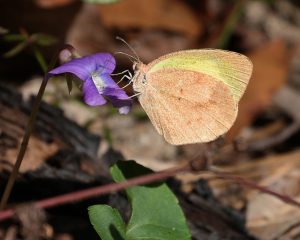
A Barred Yellow butterfly visit a violet, one of our late winter wildflowers that can be found in your lawn. Credit: Steve Coleman.
If you don’t think you’re ready to skip mowing the whole lawn for the whole month of March, then maybe you could try a small piece and hold off as long as you can. The point is to get you thinking of how your lawn, usually not considered an inviting place for most wildlife, can actually provide valuable ecosystem services. Many pollinator species in our area are emerging from their winter break and looking for food as we move into March. Plants in your lawn that are typically considered “weeds” are perfect pollinator feeders at a time when other landscape plants have yet to begin flowering. Providing extra floral resources can be especially useful in more developed areas where well-kept landscapes reduce what’s available for pollinators. Since the health and abundance of insect pollinators contribute to the ability of higher organisms, especially birds, if there’s more insects, then there’s more food for the birds, too!
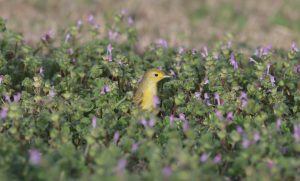
While you’re not mowing, try observing the wild plants and animals that visit your lawn. You can get help identifying them by using apps like iNaturalist or Seek. You could also spend some time ripping out part of the lawn and planting a new flower bed of native plants. Or you can focus on identifying any invasive plant species in your landscape and work on removing them.
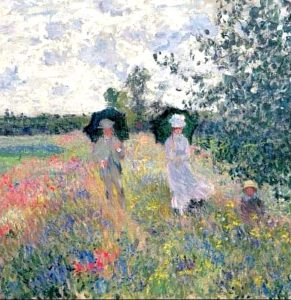
Instead of mowing, take a walk in the wildflowers during March. Credit: Taking a Walk near Argenteuil by Claude Monet.
The Horticulture Extension Agents of the UF/IFAS Extension Northwest District have put together a No Mow March website with more information, including a list of related workshops and classes, as well as a pledge you can take to affirm your choice to participate.
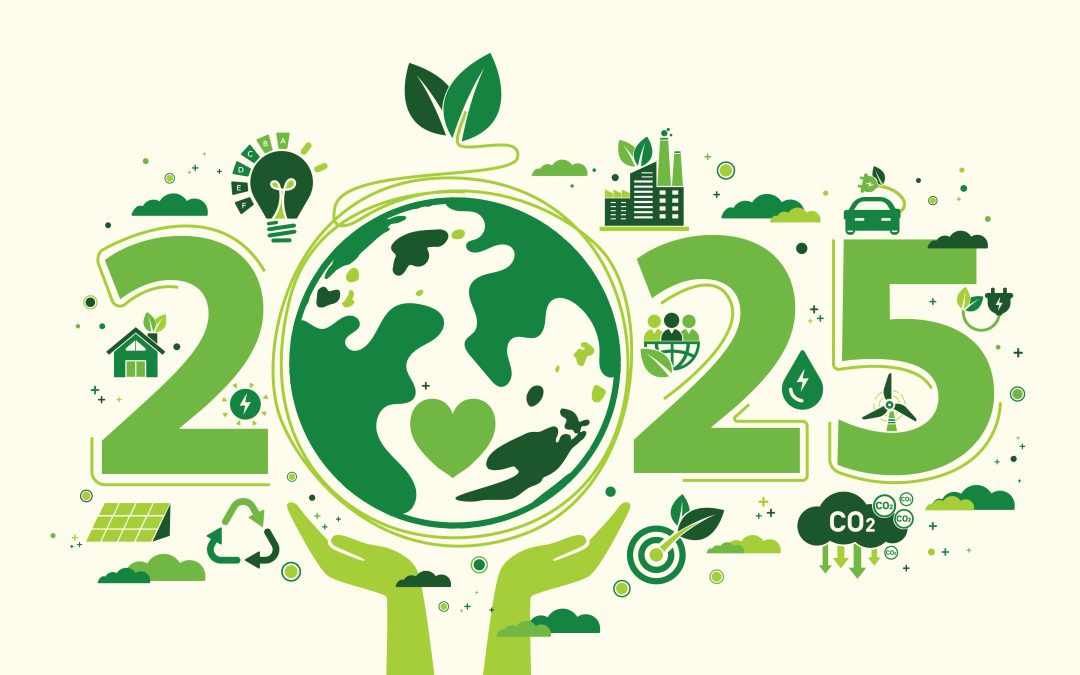
by Mark Tancig | Jan 16, 2025

Have a Happy, Green 2025!
This is the time of year where we often pledge to change and/or improve something about ourselves, but why not have a garden resolution, too. If you’d like a garden resolution or you’ve run out of personal resolution ideas (and you’re a gardener), then I have a couple of suggestions to help you garden with purpose this year.
Try to Accept more Imperfections in Your Landscape
Just like maybe we shouldn’t be so hard on ourselves or family members, we should also give our landscapes some grace. It’s hard to be perfect, and most landscapes have some minor, mostly aesthetic, imperfections, but that’s okay. Consider these landscape imperfections signs of character and what make it unique. Try to focus on the positive qualities of the overall landscape and not fixate on minor insect damage or a weed or two in the lawn. You may find that many of these issues clear themselves up on their own and your anxiety, worry, and efforts were not needed.
Reduce Pesticide Use
Somewhat dovetailing with accepting more imperfections, try and pledge to use less pesticides in your landscape. Many pesticides are applied in an attempt to fix minor landscape problems that often go away on their own. Based on numbers collected by various agencies, gardeners apply literal tons of pesticides to their ornamental landscapes. These products have environmental impacts and are often not fixing the problem, due to misdiagnosis, wrong timing of application, and/or other improper usage.
The UF/IFAS Florida-Friendly Landscaping™ Program has more information on how to manage landscape pests responsibly.
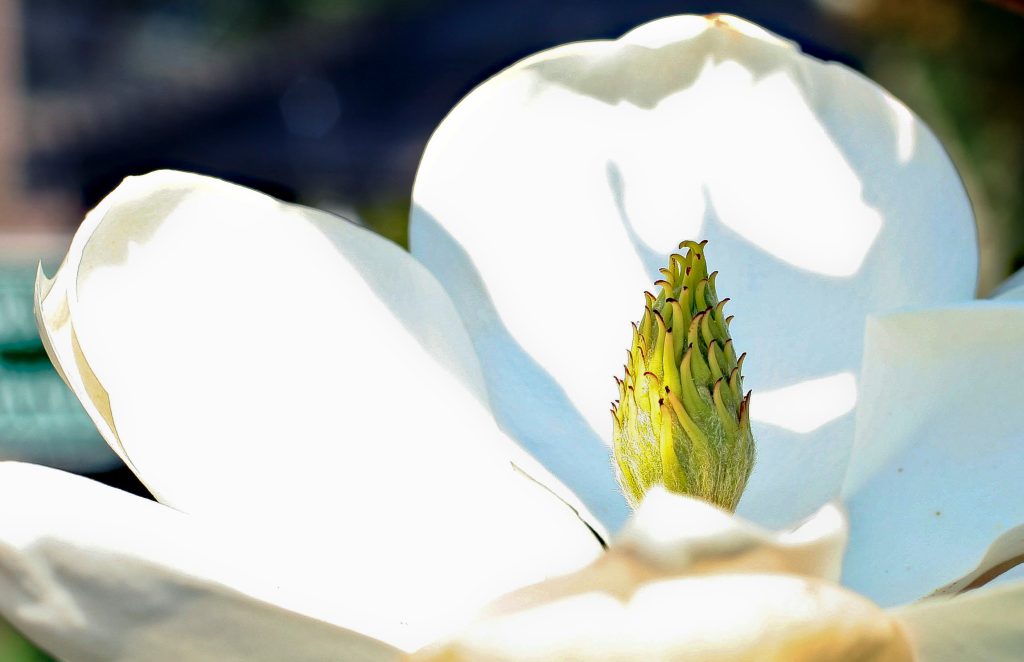
The native southern magnolia (Magnolia grandiflora) is a great native tree to plant in your landscape. Credit: Laura Ciociola.
Plant More Native Species
When thinking of new plantings or browsing the nursery, consider selecting native species for your landscape. Native species are more adapted to our native insects, diseases, soil conditions and climactic patterns. Native plants aren’t necessarily easier to grow – you still need to take care to get them well established – but they tend to be better able to handle the environmental stressors of our area. Additionally, native plants are most likely to benefit native wildlife species.
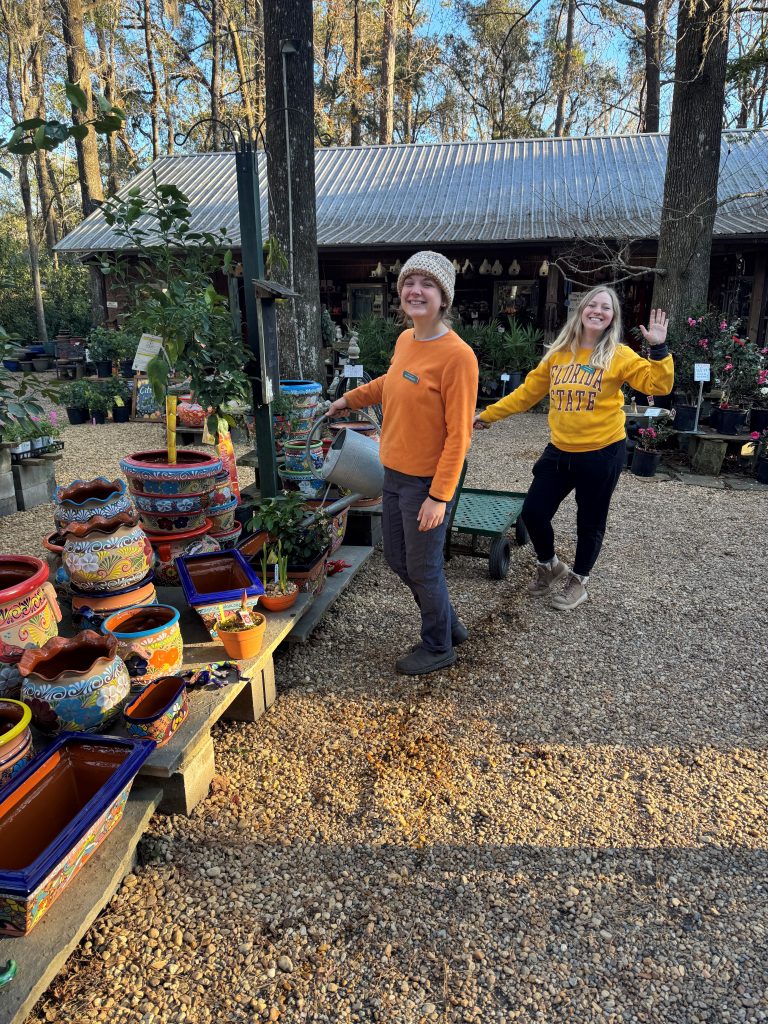
Local nurseries typically only offer plants well suited to your area and are your neighbors! Credit: Native Nurseries
Shop at Local Nurseries
When looking for those native plant species, try to support your local nursery businesses. Local nurseries tend to only carry the plants that are best suited to the area, and they’re your neighbors, too. To help find both native plant species and local nurseries, there is an association of Florida native plant nurseries (the Florida Association of Native Nurseries – FANN) that has a wonderful online search tool to find the perfect plant from the closest nursery.
Of course, don’t forget to utilize your local extension office if you decide to take on these resolutions. Whether it be help confirming that it is just a minor imperfection, help diagnosing a disease or insect problem, selecting native plant species, and or finding a local plant nursery, your local extension office can lead you in the right direction. UF/IFAS Extension’s Gardening Solutions webpage and Florida-Friendly Landscaping™ Program site also have plenty of online resources to help you have another successful and sustainable gardening year.
Happy New Year and Happy Gardening!




















